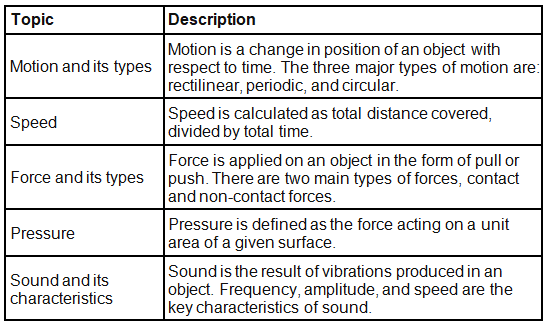CTET & State TET Exam > CTET & State TET Notes > Science & Pedagogy Paper 2 for CTET & TET Exams > Notes: Moving Things
Notes: Moving Things | Science & Pedagogy Paper 2 for CTET & TET Exams - CTET & State TET PDF Download
Important Moving Things, People and Ideas
There are several sorts of moving things, people and ideas problems for TET exams. These are based on the following main topics:

The document Notes: Moving Things | Science & Pedagogy Paper 2 for CTET & TET Exams - CTET & State TET is a part of the CTET & State TET Course Science & Pedagogy Paper 2 for CTET & TET Exams.
All you need of CTET & State TET at this link: CTET & State TET
|
34 videos|145 docs|32 tests
|
FAQs on Notes: Moving Things - Science & Pedagogy Paper 2 for CTET & TET Exams - CTET & State TET
| 1. What is the importance of moving things in CTET and State TET exams? |  |
Moving things are an important topic in the CTET and State TET exams because they assess the candidates' understanding of the concept of movement and its significance in various contexts. Questions related to moving things can be asked in subjects like science, social science, and environmental studies.
| 2. How can the concept of moving things be applied in the classroom? |  |
The concept of moving things can be applied in the classroom by conducting hands-on experiments and activities that involve motion and movement. Teachers can use objects like balls, pendulums, or toy cars to demonstrate concepts related to speed, distance, and direction. This helps in making the learning process more engaging and interactive for students.
| 3. What are some examples of moving things that can be used to teach different subjects in CTET and State TET exams? |  |
Some examples of moving things that can be used to teach different subjects in CTET and State TET exams are:
- In science, teachers can use magnets to explain the concept of magnetic force and how it can move certain objects.
- In social science, teachers can use maps and globes to teach about the movement of people, goods, and ideas across different regions and countries.
- In environmental studies, teachers can use models or diagrams to explain the movement of water through the water cycle.
| 4. How can teachers integrate the concept of moving things into their lesson plans? |  |
Teachers can integrate the concept of moving things into their lesson plans by incorporating activities, experiments, or discussions that involve motion and movement. For example, they can design a lesson on forces and motion in science, where students can conduct experiments to understand the factors that affect the speed or direction of an object's movement. By actively involving students in such activities, teachers can enhance their understanding and application of the concept.
| 5. How can understanding the concept of moving things benefit teachers in CTET and State TET exams? |  |
Understanding the concept of moving things can benefit teachers in CTET and State TET exams as it allows them to effectively teach topics related to motion and movement in various subjects. It enables them to create engaging and interactive learning experiences for students, which can improve their comprehension and retention of the content. Additionally, having a strong understanding of moving things can help teachers answer related questions accurately in the exams, thereby increasing their chances of scoring well.
Related Searches
















